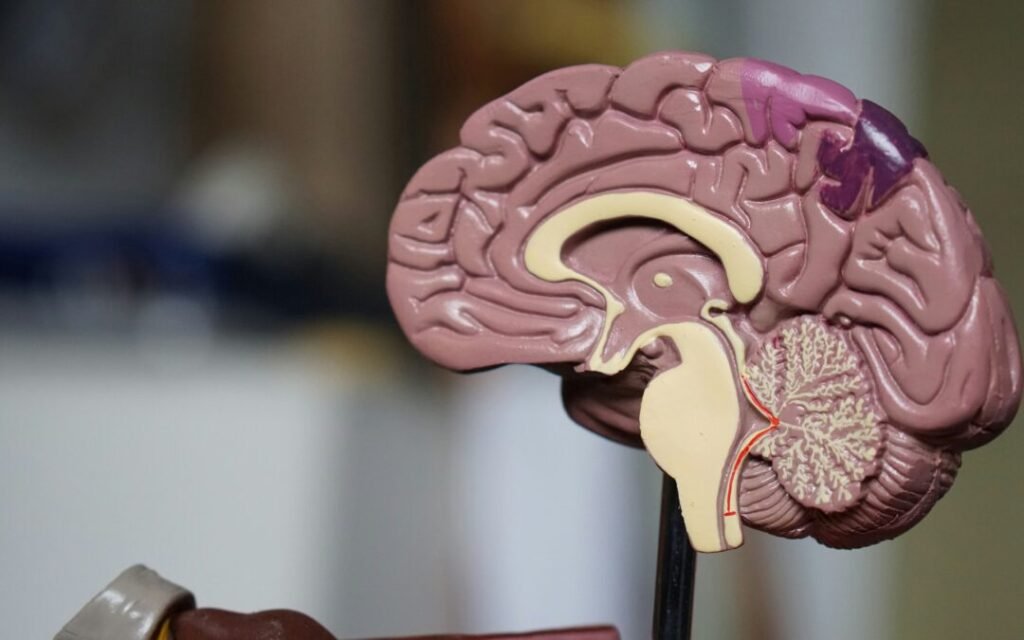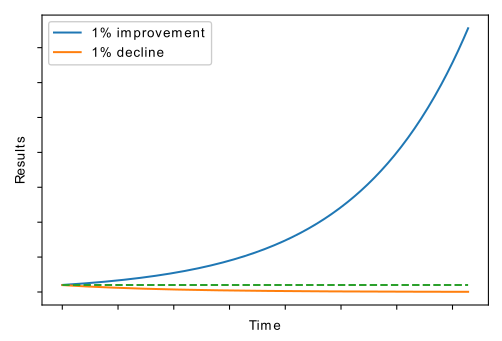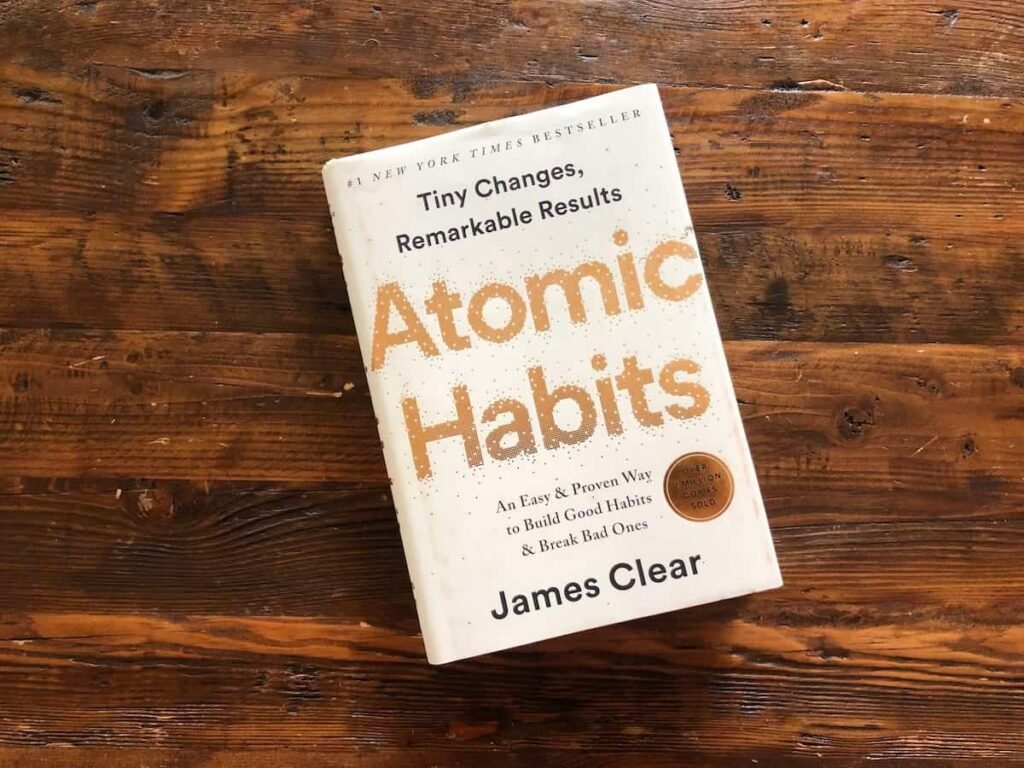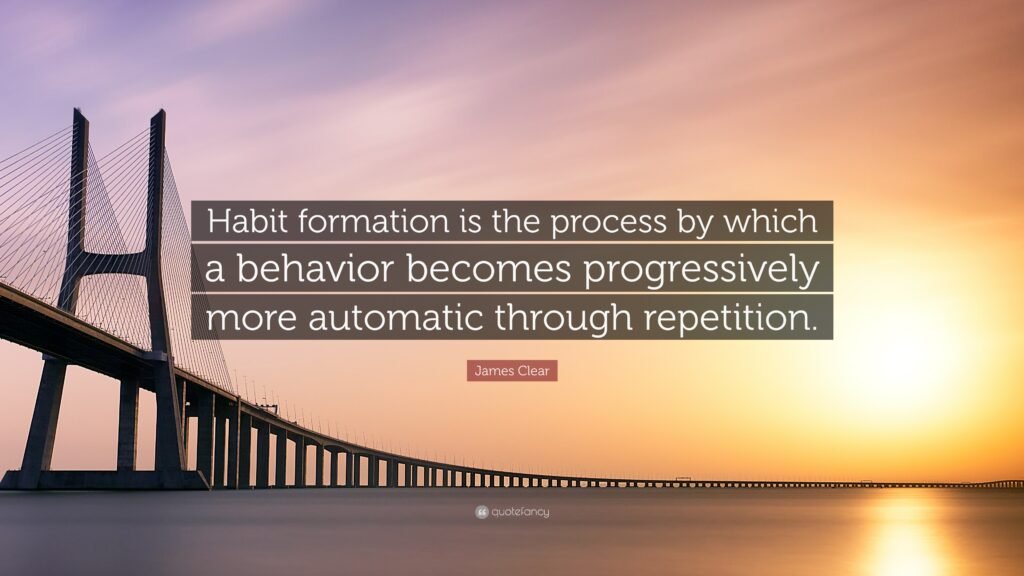
The Art and Science of Developing and Keeping Good Habits: A Wellness Warrior’s Guide
In the pursuit of a healthier, more fulfilling life, the development and maintenance of good habits stand as cornerstones of personal growth and well-being. As wellness warriors, we understand that our daily routines and behaviors shape not only our present but also our future. This comprehensive guide delves into the intricate world of habit formation, exploring the psychology behind our behaviors, the science that underpins change, and practical strategies for cultivating habits that serve our highest good. And handy to reach any achievable goal.

Understanding the Nature of Habits
At their core, habits are the building blocks of our daily lives. They are repetitive behaviors or thought patterns that occur automatically, often without conscious thought. The renowned psychologist B.F. Skinner’s operant conditioning theory provides a framework for understanding how these habits form and persist through a cycle known as the habit loop.
The Habit Loop: Cue, Routine, Reward
The habit loop consists of three primary components:
1. Cue: This is the trigger that initiates the behavior. It can be an external factor, such as the sight of your running shoes by the door, or an internal one, like feeling stressed after a long day at work .
2. Routine: This is the behavior itself, which can be a physical action (like going for a run) or a mental process (such as meditation) .
3. Reward: This is the benefit gained from the behavior, which reinforces the habit loop by providing a sense of satisfaction or relief .
Understanding this loop is crucial for anyone looking to develop new habits or break old ones. By identifying the cues that trigger our behaviors and the rewards that reinforce them, we can begin to make conscious changes to our routines.

The Science Behind Habit Formation
The formation of habits is a fascinating process that involves complex neurological and psychological mechanisms. Research has shown that it takes an average of 66 days for a new behavior to become automatic, although this can vary significantly depending on the complexity of the behavior and individual differences .
The Role of Dopamine
Dopamine, often referred to as the “feel-good” neurotransmitter, plays a significant role in habit formation. When we receive a reward after performing a behavior, our brain releases dopamine, creating a sense of pleasure. This reinforces the habit loop, making us more likely to repeat the behavior in the future.
Automaticity and Habit Strength
As we consistently repeat a behavior in response to specific cues, it becomes increasingly automatic. This automaticity is a key indicator of habit strength. Studies have shown that simpler actions, like drinking water, tend to reach peak automaticity more quickly than complex routines, such as exercising .

Good Habits vs. Bad Habits: A Psychological Perspective
While we often categorize habits as “good” or “bad,” from a psychological standpoint, habits are simply learned behaviors that have become automatic. What we perceive as good habits are those that have positive physical, emotional, or psychological outcomes, while bad habits are those with negative consequences .The challenge in changing habits lies in their automatic nature. Once a habit is formed, it becomes deeply ingrained in our daily routines, making it difficult to alter without conscious effort and strategy.

READ MORE: Take a Peek 6 Months Hacks Plan to Lock In and Change your Life!
Theories of Behavior Change
Several psychological theories provide frameworks for understanding and facilitating behavior change. These theories offer valuable insights for wellness warriors looking to develop and maintain good habits:
1. Transtheoretical Model (Stages of Change)
This model outlines five stages of behavior change:
1. Precontemplation
2. Contemplation
3. Preparation
4. Action
5. Maintenance
It emphasizes the importance of progressing through these stages to achieve lasting change . Understanding where you are in this process can help you tailor your approach to habit formation more effectively.

2. Social Learning Theory
This theory posits that behavior change is influenced by environmental, personal, and behavioral factors. It suggests that altering these factors can lead to changes in behavior . For wellness warriors, this might mean creating a supportive environment, cultivating a positive mindset, and focusing on behaviors that align with their health goals.
3. Reasoned Action Approach
This approach focuses on the role of intention and perceived control in behavior change. It highlights the influence of social norms and personal attitudes on the motivation to change . By aligning our habits with our values and the positive norms of our social circles, we can increase our chances of success.
4. Fogg Behavior Model
This model identifies motivation, ability, and triggers as key elements of behavior change. It suggests that successful change requires a person to be motivated, capable, and prompted to continue the behavior. For wellness warriors, this might mean starting with small, achievable habits and gradually increasing their complexity as motivation and ability grow.

Strategies for Developing and Maintaining Good Habits
Armed with an understanding of the psychology behind habits, we can now explore effective strategies for developing and maintaining good habits:
1. Habit Stacking
Habit stacking is a powerful technique that involves linking a new habit to an existing one. By using an established habit as a cue for the new behavior, we can leverage our existing routines to build new, positive habits . For example, if you already have a habit of drinking coffee every morning, you could stack a new habit of reading a book for 10 minutes right after you finish your coffee.
2. Atomic Habits
The concept of atomic habits, popularized by James Clear, focuses on making small, incremental changes that compound over time to produce significant results. This approach is based on the idea that habits are the compound interest of self-improvement . By focusing on tiny changes, wellness warriors can gradually build habits that lead to remarkable improvements in their overall well-being.

✔ The 1% Rule
The 1% rule suggests focusing on making small improvements every day. These tiny changes can lead to remarkable results over time. For example, improving by just 1% each day for a year would result in being 37 times better by the end of the year .
✔ The Four Laws of Behavior Change
Clear outlines four laws designed to make good habits more appealing and bad habits less so:
1. Make it obvious
2. Make it attractive
3. Make it easy
4. Make it satisfying
By applying these laws to our habit formation efforts, we can increase our chances of success .
3. Identity-Based Habits
Aligning our habits with our desired identity can be a powerful motivator. Instead of focusing solely on outcomes, we can shift our mindset to embody the type of person we want to become. For example, rather than saying “I want to lose weight,” a wellness warrior might say, “I am someone who prioritizes my health and makes nutritious food choices”.

4. Environment Design
Our environment plays a crucial role in shaping our habits. By designing our surroundings to support our desired behaviors, we can make good habits easier to maintain and bad habits harder to indulge. This might involve keeping healthy snacks readily available, setting out exercise clothes the night before, or creating a dedicated meditation space .
5. Tracking Progress and Celebrating Small Wins
Keeping track of our progress and celebrating small victories can boost motivation and reinforce the habit loop . Wellness warriors can use habit tracking apps, journals, or simple checklists to monitor their progress and acknowledge their achievements, no matter how small.

Overcoming Common Challenges in Habit Formation
While developing good habits is essential for wellness, it’s not without its challenges. Here are some common obstacles and strategies to overcome them:
1. Executive Functioning Issues
For individuals with executive functioning deficits, such as those with ADHD or ASD, forming habits can be particularly challenging. These individuals may struggle with planning, organization, and maintaining focus.
Strategies to address this include:
✔ Breaking habits into smaller, more manageable steps
✔ Using visual reminders and cues
✔Leveraging technology for reminders and tracking
2. Overwhelm and Burnout
Attempting to establish too many habits at once can lead to overwhelm and burnout. To avoid this:
✔ Start with one or two habits at a time
✔ Focus on consistency rather than perfection
✔Allow for flexibility and adjust as needed

3. Procrastination and Motivation
Procrastination often stems from a lack of motivation or the discomfort associated with starting a new habit. To combat this:
✔ Use the “two-minute rule” – commit to doing the habit for just two minutes
✔ Focus on the immediate benefits of the habit
✔ Create accountability through social support or habit-tracking apps
4. Stress and Anxiety
High levels of stress and anxiety can derail habit formation efforts. Strategies to manage this include:
✔ Incorporating stress-reduction techniques like meditation or deep breathing
✔ Practicing self-compassion and acknowledging that setbacks are normal
✔ Seeking professional support if stress and anxiety are persistent

5. Perfectionism
Setting unrealistic expectations can hinder habit formation. To address this:
✔ Focus on progress rather than perfection
✔ Set realistic, achievable goals
✔ Celebrate small wins along the way

The Impact of Habits on Long-Term Health and Wellness
The power of habits in shaping our long-term health and wellness cannot be overstated. Research has shown that maintaining healthy lifestyle habits can significantly extend life expectancy and reduce the risk of chronic diseases.
A study led by Frank Hu at the Harvard T.H. Chan School of Public Health found that maintaining five healthy lifestyle factors (a healthy diet, not smoking, regular physical activity, moderate alcohol consumption, and maintaining a normal weight) can extend life expectancy by an average of 14 years for women and 12 years for men.
Moreover, the World Health Organization reports that increasing physical activity levels could prevent nearly 500 million new cases of preventable major noncommunicable diseases globally between 2020 and 2030, saving an estimated US $300 billion in healthcare costs.

Real-Life Success Stories
The power of habit change is best illustrated through real-life examples. Here are a few inspiring stories of individuals who have successfully transformed their habits to improve their wellness:
1. Weight Management Through Habit Change: Participants in habit-based weight-management programs like “Ten Top Tips” and “Do Something Different” reported sustained weight loss and increased energy and confidence by focusing on practical everyday habit changes rather than traditional diet and exercise approaches .
2. Overcoming Addiction Through Gradual Reduction: An individual shared their journey of overcoming a soda addiction by gradually reducing consumption and replacing it with healthier options like water. This approach allowed for a sustainable change without the pressure of going cold turkey.
3. Language Learning Through Habit Stacking: A reader of “Atomic Habits” successfully stacked a new language learning habit onto their existing routine of taking cab rides, demonstrating how habit stacking can be used to incorporate new skills into daily life .
These stories highlight the diverse strategies individuals have employed to successfully change their habits, emphasizing the importance of personalization, gradual change, and leveraging environmental cues.

One of Our Favourite Books : “Atomic Habits” by James Clear
In “Atomic Habits,” James Clear presents a comprehensive framework for understanding the science of habit formation and how small changes can lead to significant improvements in our lives. The book emphasizes that by focusing on small steps and making incremental adjustments to our daily routine, we can cultivate healthier habits that align with our long-term goals.
The Power of Small Changes
Clear argues that the best ways to achieve lasting change are through small changes that can be easily integrated into our daily activities. He introduces the concept of atomic habits, which are tiny, manageable actions that, when repeated consistently, can lead to remarkable results over time. For instance, choosing to drink a glass of water instead of soda during your lunch break is a simple yet effective way to promote healthy eating and reduce unhealthy habits.

The Habit Formation Process
The book outlines a four-step process for habit formation, which includes:
1. Cue: The trigger that initiates the habit.
2. Craving: The desire or motivation to perform the habit.
3. Response: The actual behavior or action taken.
4. Reward: The benefit gained from completing the habit.
Clear emphasizes that understanding this habit formation process is crucial for developing better habits and breaking negative habits. By manipulating these elements, we can create a system that makes it easier to adopt positive habits and eliminate those that do not serve us.

The Role of Environment and Contextual Cues
Clear highlights the importance of contextual cues in shaping our behaviors. By designing our environment to support our goals, we can make it easier to stick to our daily habits. For example, placing healthy food at eye level in the grocery store can encourage better choices, while keeping junk food out of sight can help reduce temptation.
The Importance of Identity
One of the key takeaways from “Atomic Habits” is the idea of identity-based habits. Clear suggests that instead of focusing solely on outcomes, we should strive to become the type of person who embodies the habits we want to develop. For instance, rather than setting a new goal to lose weight, we should think of ourselves as someone who prioritizes physical health and engages in regular exercise.

Overcoming Challenges
Clear acknowledges that the journey to habit formation is not without its challenges. He discusses the impact of negative self-talk and stress levels on our ability to maintain habits. Practicing self-compassion and focusing on positive thinking can help mitigate these effects. Additionally, he emphasizes the importance of celebrating small wins to reinforce our commitment to change.
The Long-Term Perspective
Ultimately, “Atomic Habits” is about embracing the ongoing process of habit formation. Clear encourages readers to view their habits as a long-term investment in their future selves. By committing to simple steps and making gradual improvements, we can create a life that reflects our values and aspirations. In conclusion, “Atomic Habits” provides a practical and insightful guide for anyone looking to make meaningful lifestyle changes. By understanding the mechanics of habits and implementing Clear’s strategies, we can transform our routine behaviors into powerful tools for achieving our long-term goals and fostering a healthier, more fulfilling life.

Conclusion: Embracing the Journey of Habit Formation
As wellness warriors, we understand that the path to better health and well-being is paved with the habits we cultivate daily. By understanding the science behind habit formation, leveraging effective strategies, and learning from real-life success stories, we can embark on a transformative journey of personal growth and improved wellness.Remember, habit formation is not about perfection but progress.

Each small step, each tiny habit, contributes to the larger tapestry of our lives. By embracing the process, celebrating our successes, and learning from our setbacks, we can create lasting change that supports our highest aspirations for health and happiness.So, fellow wellness warriors, let us take up the challenge of habit formation with enthusiasm and determination. Armed with knowledge and strategies, we have the power to shape our behaviors, our health, and ultimately, our lives. The journey of a thousand miles begins with a single step – or in our case, a single habit. Let’s make it count.
